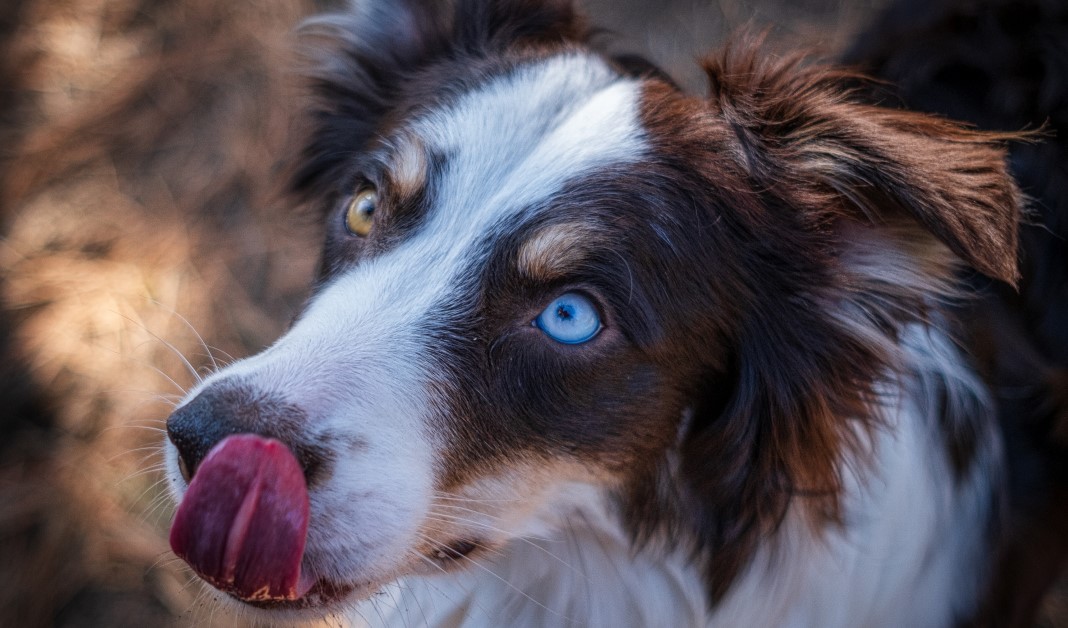What Causes Heterochromia in Dogs
Heterochromia in dogs, a condition characterized by two different colored eyes, can be caused by genetics, trauma, or other health issues.

Have you ever seen a dog with two different colored eyes? This is a condition known as heterochromia. Heterochromia is not just limited to canines but can also occur in other species, such as cats, horses, and sometimes even humans. This captivating phenomenon can have several variations and causes. Learn more about what causes heterochromia in dogs and what it means if your pup is born with this unique condition.
Types of Heterochromia in Dogs
Heterochromia is caused by a lack of a pigment known as melanin in all or part of the eye. Dogs with this condition usually have an eye that appears blue or bluish-white. There are three main types:
- Complete Heterochromia: This manifestation is where each eye is a different color. For example, a dog with complete heterochromia may have one eye that is a rich brown hue and another eye that is a striking shade of blue.
- Sectional Heterochromia: This condition occurs when only a segment of the eye is a different color. For example, a dog with sectional heterochromia may have a brown eye with a section of bright blue in the iris.
- Central Heterochromia: Central heterochromia occurs when the center of one or both eyes is a different color than the outer parts of the eyes. For example, a heterochromatic dog may have a brown eye with a brilliant blue core.
Which Dog Breeds are Most Affected?
While heterochromia can occur in any dog breed, some breeds are more predisposed to developing this intriguing trait. The Siberian Husky is well-known for having heterochromia. The condition often presents in Siberian Huskies with one brown eye and one blue eye. However, heterochromia is also common in other breeds.
Australian Shepherds are at a higher risk of developing heterochromia, often seen with one eye being brown and the other blue or marbled. This creates an alluring contrast. Dalmatians, Border Collies, Shih Tzus, Great Danes, and Shetland Sheepdogs are also known for being born with these beautiful variations in eye color.
Causes of Heterochromia in Dogs
All dogs are born with blue or bluish-grey eyes and as they mature, their eye color will change. In some puppies, the appearance of heterochromia is evident soon after birth.
To determine if a dog has heterochromia, a vet will generally rule out other possible causes of abnormal eye color. For example, eye inflammation (uveitis) can sometimes cause a dog’s eye color to change. However, this condition is often accompanied by other symptoms, such as swollen or red eyes, flaky skin, scratching, rubbing, impaired vision, or eye discharge.
Some of the most common causes of heterochromia in dogs include:
Canine Genetics
Genetics is the most common underlying factor in the development of heterochromia in dogs. Certain genetic mutations can result in the manifestation of two different eye colors. A dog may develop this condition if one of its parents has it or if it is a breed more susceptible to the phenomenon.
The color and pattern of a dog have been found to influence how heterochromia appears. It is more common in dogs that have piebald or merle patterns. It is also more prevalent in females than males in certain breeds, such as Dalmatians.
Trauma or Eye Injuries
In rare instances, heterochromia can occur as a result of trauma or injury to the eye. If an accident, significant blow to the eye, or other type of ocular injury occurs that impacts the eye, it could cause the eye to change colors, resulting in heterochromia. When this condition occurs due to trauma or an injury, it is usually referred to as traumatic or acquired heterochromia.
Health Issues
Health conditions can also influence eye color in dogs. Certain pre-existing conditions can contribute to changing eye color, such as uveitis or glaucoma, which can cause the eye to alter its iris pigmentation. In some instances, the change in eye color is temporary. However, depending on the underlying health problem or the severity of the condition, the change in eye color could be permanent.
What It Means to Have a Heterochromatic Dog
Adopting a dog with heterochromia can naturally cause concern. Many pet owners want to know if heterochromia in dogs is harmful or will affect their pet’s health or lifespan. In most cases, the answer is no. Heterochromia is generally a benign condition that does not cause discomfort to the dog or pose health risks. This means that most dogs with this condition live long, healthy lives.
However, pet owners need to determine the underlying cause of the condition. There is generally no concern when heterochromia is solely a cosmetic trait. Problems can develop if the condition is found to be caused by an underlying medical disorder, such as an ocular condition. For example, if heterochromia develops suddenly after an accident or trauma to the eye, veterinary attention is necessary.
Contrary to popular belief, dogs that have two blue eyes or one blue eye caused by heterochromia are not at a higher risk of having vision impairment. In addition, most dogs with blue eyes have healthy hearing. If your dog suddenly develops two different colored eyes or you are concerned about your pup’s eye health, schedule an appointment with your vet for an evaluation.
Ready to start saving money on pet wellness care?
Then take a look at Mint Wellness, the pet wellness plan that provides fast reimbursement on routine pet care. Save on vaccinations, wellness exams, preventatives, dental, and more!
Learn More


